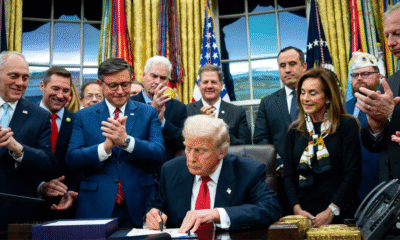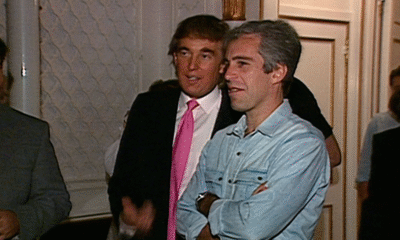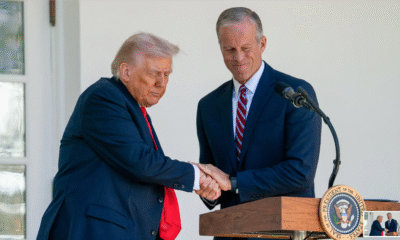Trump Presidency
Trump Moves to Dismantle Department of Education, Sparking Legal and Political Battles
In a controversial move, President Donald Trump signed an executive order on Thursday to begin dismantling the U.S. Department of Education, a long-standing Republican goal. The move fulfils a key campaign promise but faces significant legal and political obstacles, with experts predicting the issue will ultimately end up in court.
The Signing Ceremony: A Symbolic Start to a Legal Fight
During a high-profile ceremony, Trump signed the executive order surrounded by schoolchildren who mimicked his actions by signing their own copies of the order. The theatrical event underscored Trump’s messaging: he views federal involvement in education as a failure and believes local control will better serve students. “I will sign an executive order to begin eliminating the Federal Department of Education once and for all,” Trump declared. “And everybody knows it’s right.”
His comments, however, were met with immediate backlash from Democratic lawmakers and education advocates, who warn that dismantling the department could harm millions of students—particularly low-income and minority children who rely on federal education funding and oversight.
Meet the Donald Trump Administration Secretary of Education – WWE’s Linda McMahon
The Role of the Department of Education
Founded in 1979 under President Jimmy Carter, the Department of Education consolidates federal education initiatives and ensures equal access to quality education. Unlike Trump’s claims, the department does not dictate school curricula; rather, it primarily distributes federal aid, enforces civil rights laws, and conducts education research.
Key programs administered by the department include
Pell Grants, which provide financial aid to low-income students
Title IX enforcement, ensuring gender equity in schools
Support for students with disabilities, guaranteeing accommodations and equal access
Anti-discrimination oversight, protecting students from racial and economic inequalities in education
Critics of Donald Trump’s plan argue that shutting down the department will jeopardize these essential services and leave education policies to the discretion of individual states, potentially increasing disparities between wealthy and poor school districts. This was after WWE’s Linda McMahon was appointed as the secretary of education.
🇺🇸President Trump Signs Executive Order to Eliminate the Department of Education
“Closing the Department of Education would provide children and their families the opportunity to escape a system that is failing them.” –President Trump pic.twitter.com/aiyZs9TDC9
— The White House (@WhiteHouse) March 20, 2025
Can Trump Legally Shut Down the Department?
Despite the executive order, Trump does not have the unilateral authority to eliminate the Department of Education. That power belongs to Congress, which would need to pass legislation formally dissolving the department.
Senator Bill Cassidy (R-LA) has already announced plans to introduce such legislation, but it faces significant hurdles in the Senate, where 60 votes are required to overcome a filibuster. With only 53 Republican seats, passing the measure is unlikely without Democratic support.
Legal experts also predict court challenges to Trump’s order, particularly from civil rights and education advocacy groups. Organizations like the American Federation of Teachers (AFT) have already signalled their intent to challenge the move in court.
Political Reactions and the Future of Education Policy
Democratic leaders swiftly condemned Trump’s action. Senate Minority Leader Chuck Schumer called it “one of the most destructive and devastating steps Trump has ever taken” and warned it would harm millions of children.
Representative Rashida Tlaib (D-MI) also criticized the move, arguing that the department ensures equal educational opportunities regardless of race, income, or geography.
Conversely, Republican governors and conservatives praised Trump’s order, arguing that education should be controlled at the state level. Florida Governor Ron DeSantis, a former Trump rival, attended the signing event and voiced strong support.

Linda McMahon, Secretary of Education in a WWE ring
What’s Next?
While Trump insists that education programs like Pell Grants and disability services will be “preserved and redistributed” to other agencies, critics remain sceptical. The executive order is just the beginning of a prolonged legal and legislative battle over the future of federal education policy. As the fight unfolds, the fate of the Department of Education will likely be decided in Congress and the courts, shaping American education policy for years to come.












































Pingback: Student Loan Collections To Resume May 5th : Linda McMahon
Pingback: Trump Can Fire Department Of Education Workers, Supreme Court